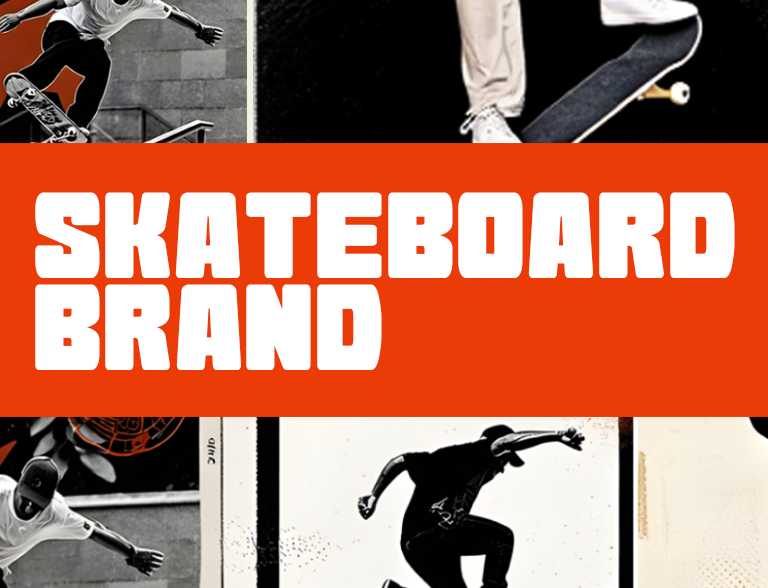Graphic Design: Skate Boarding Brand
In this video, the creator shares their journey of establishing a skateboard brand, detailing the steps involved in the design process and brand-building strategy. The process begins with extensive online research to gather inspiration through imagery, iconography, and lifestyle depictions related to skateboarding. The creator emphasizes the importance of originality and finding unique elements that set the brand apart in a crowded market.
To visualize ideas, sketches are made using traditional pencil and paper, an approach endorsed by renowned designers. A mood board is then compiled to curate images, photos, and illustrations that encapsulate the envisioned theme and aesthetics of the brand. The video showcases the creation of vector illustrations and iconography that align with the brand’s overall direction. Various artistic patterns are developed to create an easily recognizable identity.
Mockups are then created to provide a realistic view of how these designs will be applied in real life, allowing for an assessment of the designs in practice. Finally, the importance of assembling all brand assets into a comprehensive brand guide is highlighted. This guide ensures consistency in messaging and visuals, which is vital for building a robust brand identity that resonates with the target audience.
Highlights
- 🎨 Creative Process: The video showcases a detailed creative process, starting from research to execution.
- 🖊️ Traditional Techniques: Emphasis on sketching as an essential step in the design phase.
- 📋 Mood Board Creation: Importance of mood boards in assembling design inspiration.
- 📐 Vector Illustrations: Development of digital icons and art that are unique to the brand.
- 💡 Mockup Visualization: Use of mockups to visualize the application of designs in real-world contexts.
- 📚 Brand Guide Importance: Assembling an effective brand guide for consistency in branding.
- 🚀 Unique Brand Identity: Focus on creating recognizable patterns and art associated with the skateboard brand.
Key Insights
- 📖 The Research Phase is Crucial: Conducting thorough research on existing skateboard brands helps identify gaps and opportunities for differentiation. By analyzing competitors’ work, a creator can develop a distinct visual language that speaks to their unique positioning in the market. This foundational step ensures that the brand will attract attention and stand out from the competition.
- ✏️ Sketching Enhances Ideation: Traditional sketching, despite being an analog method in a digital age, allows for free exploration of ideas. Designers such as Paul Rand and Saul Bass emphasized that sketching fuels creativity as it fosters spontaneity and facilitates brainstorming. This practice can unveil innovative concepts that mere digital drafting may overlook.
- 🌆 Mood Boards Foster Clarity: The construction of mood boards plays a pivotal role in creative projects. By visually aggregating images and concepts, designers can set clear atmospheric and thematic goals for their projects. Mood boards help communicate ideas and inspirations effectively to collaborators and ensure everyone is aligned with the brand’s vision.
- 📊 Vector Illustrations Are Key to Modern Branding: Creating vector illustrations provides flexibility in design since they can be scaled without loss of quality. This adaptability is essential for branding, as logos and icons need to appear in various contexts, from web to print media. Unique vector graphics celebrate identity and associations tied to the brand ethos.
- 🖼️ Mockups Validate Designs: Utilizing mockups is an invaluable practice in branding. It allows designers to see their work applied to realistic scenarios, thereby assessing aesthetics and functionality. This step ensures that designs have a practical impact and are visually appealing in real-world applications, making it easier to make necessary adjustments based on feedback.
- 📜 Brand Guides Are Essential for Consistency: A well-structured brand guide contains all visual and messaging specifications necessary for maintaining coherence across all marketing materials. This document serves as a reference for everyone involved in brand promotion, ensuring that the core identity remains intact regardless of who is executing it. Consistency builds trust and familiarity with consumers.
- 🏷️ Building Recognition through Patterns: Unique patterns and recognizability are key to establishing a lasting brand identity. By developing elements that are instantly associated with the brand, a creator can forge emotional connections with the audience. This connection is crucial in the skateboarding community, where identity and lifestyle play major roles in brand loyalty.
In conclusion, the video effectively outlines the essential stages of creating a skateboard brand, emphasizing the significance of research, creative processes, and the development of a coherent brand identity. By integrating traditional techniques with modern digital practices, the creator sets a foundation for success in a competitive industry, fostering both artistry and strategic brand placement. Through thoughtful design and branding considerations, the creator aims to carve out a niche that resonates with the target audience, ensuring the skateboard brand’s relevance and appeal in a diverse market.
If you want a unique brand identity that represents you best, get in touch with us so we can utilize our better practices of brand design to help you.


Leave a Reply